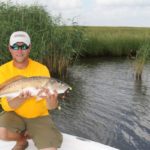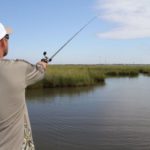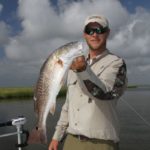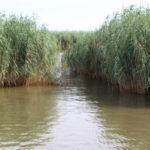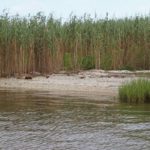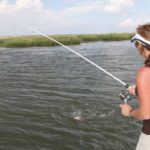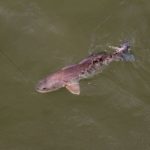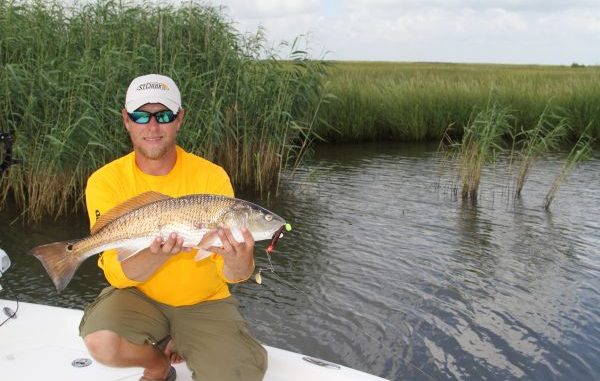
It all looks so fishy, but finding the hot spots is key
The inherent challenge of fishing the Delta marsh is that “everything looks fishy.”
Indeed, much of this vast habitat can indeed hold fish, however, reds, trout, flounder and the like won’t hold on every cane clump, shell bar, point and pond drain all the time. Preferred spots definitely exist.
Several factors govern where fish position and savvy anglers who master these calculations can keep the action going all day. Tide is the most obvious ingredient, but there’s more to it than just highs and lows. Understanding the variables of water flow, clarity and feeding motivations will put you on course to a bent rod.
Courtesy of some successful marsh guides, here’s a few points to consider in your marsh breakdown.
Think food first
On a recent mid-Delta trip, Capt. Cody Obiol of Cajun Fishing Adventures, guided Jeff Schluter of St. Croix Rods through the Buras marsh. His instructions were clear and concise.
“As we work down this bank, look for any pushes, boils and head wakes,” he said. “If you see any mullet, throw at them. Also look for any signs of bait that’s scared.”
Such scaring, Obiol said, would most likely be the work of redfish, so we scanned every pocket, bend and runout for the telltale dimples of baitfish. Reds pretty much live to eat, so they’re pretty well set in their ways when it comes to location criteria.
Capt. Billy Walbaum of Paradise Plus Charters puts it simple.
“The main think you have to look for is bait — no bait, no fish,” he said. “They’re not going to be there if there’s not a food source. That could be (finger) mullet, pogies or shrimp, but the food is the key.”
Expounding on the mullet, Obiol pointed out another scenario in which knowledge of the food chain can help anglers recognize a promising marsh position. At the convergence of three canals, we found a long sand flat sticking off one of the points and a weed line flanking the bar. With mullet pushing and splashing, the spot had that cast-here look to it and 15 reds later, we knew it was a stop worth making.
“The reds are sitting on the drop and gorging on whatever comes by,” Obiol said. “Reds eat the little mullet but once the mullet reach a certain size, reds use them as camo. They run beneath the mullet and their prey never sees them coming.”
On a related thought, Obiol pointed to several egrets wading the shore of a grassy mud mound and said that was a good sign.
“Those birds will pick of the baitfish that run too close to the edge,” he said. “When you see birds wading the shorelines of the marsh that usually means that redfish are pushing the bait shallow.”
Good ’hoods
When it comes to breaking down the seemingly endless miles of marsh bank, grass edges and Roseau cane lines, Obiol has a few things he likes to see that means he’s in a fish neighborhood.
Points: Natural transition areas that redirect water, gather forage species and, if large enough, offer some level of wind break. Points can be subtle protrusions of a grass line or the elbow found on the inside edge of a bend inside a pond drain.
Pockets: We’ve all seen ’em; they’re nothing unusual. But, those random little pockets in the grass or cane that look like they’re just big enough for a single redfish will often hold just that. Sometimes, they’re just chillin’, relaxin’, snoozin’ or enjoyin’ a little “me” time. Other times, they’re on the lookout for something to fill their belly.
Case in point: As Obiol ran us down a crescent-shaped bank of low Roseau cane, I pointed to a particular little divot.
“That’s just the kind of spot where I’d expect a redfish to be sitting,” I said.
Five seconds later, the violent explosion that greeted my spinnerbait’s arrival put an exclamation point on that statement.
Openings: Call them gaps, breaks or pinch points, the narrow passages in grass lines or Roseau cane represent promising areas, as water flowing through brings all the usual benefits of temperature moderation, oxygenation and food sources.
Paradise Plus owner Anthony Randazzo said that breaks in the Roseau cane immediately tilt the odds in your favor. From his experience, breaks in the cane where current pushes through are the areas of much higher probability. Working the entire stretch of cane might produce a fish here and there, but focusing on the areas of greater dynamics typically yields better results.
Transition Spots: Obiol said that a stand of Roseau cane butting against a grass line can create a prime redfish scenario. A couple factors come into play. First, transitional banks are always attractive to fish because the different habitats often present different forage menus. But from a strategic standpoint, the Roseau typically grows farther into the water, so the edge between cane and grass typically forms a pocket that’s just right for a redfish.
Hard Breaks: As we eased down various marsh edges, Obiol pointed out the occasional patch of shell bank, some the size of a cooler lid and others big enough to park a bay-boat trailer. All, he said, are worth a cast, as that hard bottom extending into the water tends to attract crabs and other redfish snacks.
Strategic setup
Each of those different marsh features have their specific attractions, but in the larger picture, we can borrow a phrase from the largemouth bass world and just say: It’s a stump in the pond.
Indeed, fish will traverse the boring, featureless stretches of bank en route to their next objective, but the more detail and character an area possesses, the more reason a fish has to hang or at least pause there.
“After bait, the second thing I want to look for is something different,” Walbaum said. “You don’t want a straight, flat piece of bank. Look for points, indentions and drop-offs. Fish like edges; they like to be on something with some features.”
The first thought here is ambush. Redfish and, to some degree, trout will definitely capitalize on prey ambling around a blind point. However, Walbaum points out that shoreline anomalies also serve another strategic benefit for predators.
“Baitfish like to travel in tight schools because it’s their only defense against predators,” he said. “With all those bodies moving together, it’s harder for predators to target an individual baitfish.
“I look for the shoreline anomalies because these spots break up the bait ball and the predator can zero in on one particular baitfish or shrimp.”
Find the fish
Obiol’s a big fan of searching his marsh banks with a noisy, flashy spinnerbait. The big profile and thumping Colorado blade give fish plenty to target. Favoring the H&H Redfish Special with a No. 5 blade, he’ll go with a black/chartreuse cocahoe tail in low light and dirty water, while lighter/brighter colors are his choice for sunny days and/or clear water.
For Walbaum, nothing beats the simplicity of a user-friendly popping cork. Suspending a Berkley Gulp! Shrimp beneath that floating noisemaker is an easy way to cover water while calling up the fish. However, if he’s faced with dirtier water, tipping that artificial bait with cuts of fresh shrimp usually enhances the deal.
Like most, Walbaum wants his redfish focusing below the cork, but reeling in a float with bite marks is no rarity. Frustrating, yes, but it also bespeaks great opportunity.
“The cork is a good way to test an area and then go back through with a spinnerbait, a soft plastic jerkbait or a spoon,” he said. “If they’re hitting the cork, it’s time to pick up a topwater. I don’t worry about adding a hook to my cork, because if they’re hitting a cork, you’re going to catch a bunch anyway.”
